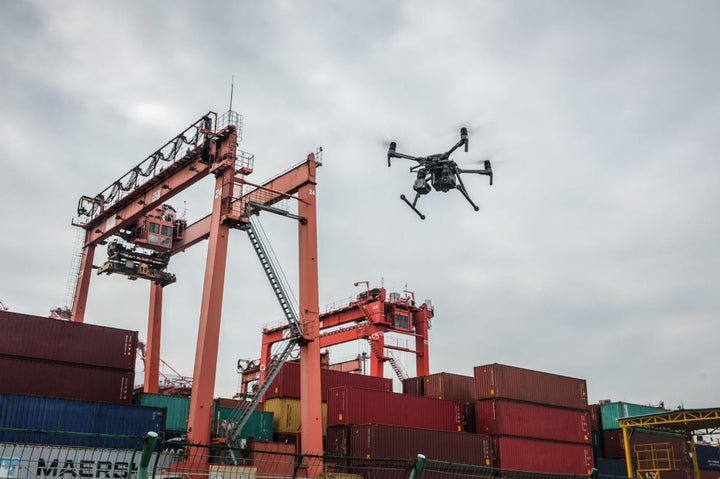Search and rescue operations are critical missions done to save lives. With lives on the line, these missions should be done as fast as possible. Still, rescue teams have limited capabilities to do that using traditional methods alone. This is why search and rescue drones are essential and popular today.
In this article, you will discover the usefulness of drones in search and rescue missions. You’ll also learn the various types of operations associated with search and rescue efforts and explore the challenges faced when conducting these operations without the assistance of drones. Likewise, below highlights the benefits that drones bring to such operations.
Types of Search and Rescue Operations
There are two search and rescue (SAR) operation categories. The type depends on the location or terrain in which the search is being carried out. Here are some of the common SAR operations conducted:
- Ground Search and Rescue

This is the type of operation on land or inland waterways to search for lost people or those who’ve gone missing. It covers procedures for reasons like accidents, abduction, domestic abuse, mental illness, etc. The police are involved in this SAR operation, and SAR teams may usually assist them.
- Combat Search and Rescue

This involves battlefield operations, typically in conflict zones, to rescue distressed individuals. These missions are critical in extracting wounded soldiers and civilians from hostile environments, often requiring swift and precise actions to ensure their safety.
- Sea-Air Rescue

This is a SAR operation for survivors of emergency water landings or loss of seagoing vessels. Civilian and military units usually carry it out. This also involves resources like helicopters, ships, seaplanes, submarines, and rescue boats.
- Mountain Rescue

Like ground SAR, this operation is done on land for the same reasons. However, these missions specialize in navigating challenging, rugged, and mountainous terrains, demanding specialized skills and equipment to effectively reach and assist those in need.
- Urban Search and Rescue

This is also known as the Heavy Urban Search and Rescue (HUSAR) operation. It’s conducted in locations like collapsed buildings and other urban and industrial entrapments. Due to the nature of the work and situation, specialized
What Are Search and Rescue Operations Like Without Drones?
SAR teams walk and drive in straight lines during missions to look for missing people. But, this limits their coordination and the amount of terrain they can cover for the search.
Moreover, teams usually need help accessing remote and inaccessible areas or terrains. These include rocky or hilly areas or those with cliffs, rivers, and other larger bodies of water. The human eyes can only see and detect so much from a vantage point on the ground. This makes it difficult to conduct the operations most of the time.
Advantages of Search and Rescue Drones in Missions
SAR operations are unpredictable and rely on two major factors:
-
Terrain: The pace of the entire operation depends on how challenging it is to search the area. Missions on outside terrains like rainforests, snowy mountains, etc., can slow the operation.
-
Time: The missing individuals are in life-threatening situations, making time critical and valuable. This makes it essential for rescuers to find them at the earliest.
With the evolution of drone technology, SAR missions can now use drones. These unmanned aerial vehicles (UAVs) are now invaluable tools in emergencies.
Here are the main advantages and benefits drones bring to SAR missions:
1. Time Efficiency
Every second counts in these kinds of situations. With drones, rescue teams can cover a wide area faster than traditional ground methods. Drones offer unparalleled speed from launching to providing real-time visuals in the area. This makes it easier to identify the location of the missing person.
They can go over traffic and other obstructions and reach inaccessible areas, like remote locations. This capability shows time efficiency and increases the chances of rescuing people in distress immediately.
2. Improved Accessibility
Drones can reach locations that are too dangerous and inaccessible for humans and regular types of machinery. It doesn’t matter if it’s a steep mountain, a dense forest, or a rough sea. SAR drones can navigate these terrains and provide real-time information vital for the mission’s success.
3. Enhanced Safety For SAR Teams
SAR missions expose rescue teams to various risks, including injuries and accidents. However, using drones presents a valuable solution to reduce these dangers. Teams can deploy drones instead of personally venturing into hazardous areas for searches. Drones also enable teams to plan safer routes and strategies for rescue missions effectively. This not only enhances safety but also boosts overall mission efficiency.
4. High-Quality Imagery
SAR drones have advanced technologies and sensors like night vision and thermal imaging. With these features, the drones can detect body heat signatures even in obscured areas or under low light conditions. Rescue teams can easily pinpoint the distressed individuals, even if hidden from plain sight.
Drones are also equipped with high-resolution cameras, which the teams can use to capture still images. With high-quality images, the people on the ground can get valuable information. They can then use that to make informed decisions on how to proceed with the operation.
5. Communication and Coordination
Drones can connect search teams, incident commanders, and other emergency response personnel. They have two-way communication systems that are useful during operations. They provide seamless communication during missions between teams.
This allows real-time updates and coordination between everyone. With great coordination, teams can make immediate response adjustments. It also gives them improved situational awareness. All these improve the effectiveness and quickness of the rescue mission.
6. Cost Efficiency
Drones are cost-effective alternatives to the traditional SAR methods. Ground-based techniques, like manned aerial vehicles, need extensive manpower and budget. Compared to that, the use of drones requires fewer resources and costs.
The advancements in drone technology and its increased availability made drones more affordable. Since it’s a less expensive option for SAR missions, drones have become a much-preferred option. This is true for many organizations and emergency response teams around the world.
Conclusion
Search and rescue operations are critical missions that need immediate and efficient response. But, using traditional methods makes it harder for rescue teams to do everything fast. They’d need longer time and more effort and resources but still won’t be able to reach inaccessible areas. But with search and rescue drones, everything can proceed faster.
If you’re in a SAR organization or want to use SAR drones, you can check out our massive drone collection. We offer all kinds of drones and accessories, from professional to consumer drones to cameras and other accessories.


